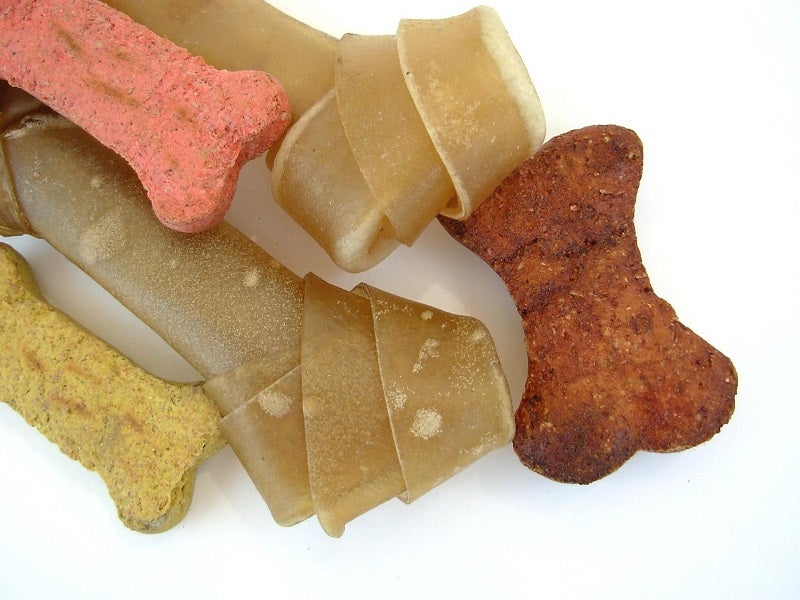
Innovative Pet Food Packaging: Five Future Trends
The pet food packaging market was valued at $9.29bn in 2018 and is predicted to grow at to $12.9bn by 2024, at a CAGR of 6.79% for the forecast period of 2019-2024, according to the ‘Pet food packaging market – growth, trends, and forecast (2019 – 2024)’ report. With pet owners wanting more protective, informative and tasteful packaging, manufacturers are pushing to improve labelling, and produce more intelligent pet food packaging. Packaging Gateway takes a look at five future innovative pet food packaging trends to watch.
1) Sustainability
Probably the biggest trend in packaging right now, sustainability has been a heavy concern voiced by governments and consumers. ProAmpac’s PRO-EVP multiwall bags are an example of sustainable pet food packaging, made from fibre-based renewable resources and paper/poly hybrid materials. The company’s PRO-DURA range comes in woven polypropylene bags, offering flexibility and durability.

Discover B2B Marketing That Performs
Combine business intelligence and editorial excellence to reach engaged professionals across 36 leading media platforms.
International packaging and paper group Mondi replaced plastic with paper for its dog food packaging in October 2018. The company said the packaging gives a natural look and feel, while still providing the necessary protective, decorative and lightweight properties as plastic counterparts.
Pet food #packaging is the opportunity to innovate sustainable solutions and draw in consumers with unique design choices that speak to their needs and wants. https://t.co/RDILIGU9WZ #petfood #packagingdesign pic.twitter.com/NtgIGZwruG
— Perfect Automation (@perfectautomat) February 25, 2019

US Tariffs are shifting - will you react or anticipate?
Don’t let policy changes catch you off guard. Stay proactive with real-time data and expert analysis.
By GlobalData2) Premiumisation
The interest in premiumisation within the pet food sector has mainly been focused on the ingredients, sourcing and processing. However, this trend has trickled down into the pet food packaging market with a focus on sensory-focused packaging. With interest in touch-based packaging increasing over the years, packaging experts understand the importance of conveying a brand’s story in a different way that consumers find attractive.
ProAmpac recently unveiled its Signature Surfaces product range, with paper, soft and registered touch packaging. The packaging is said to offer heat, scuff and chemical resisting properties, with glossy graphics or a clear window provided to attract consumer attention.
Premiumization of #PetFood and growth in #PetProduct sales continue to drive pet product #packaging demand, according to @packaged_facts in the report “Pet Product Packaging Innovation.”
https://t.co/FFbBYNWVKL#mrx #MarketResearch #Pets #Dogs #Cats #Retail #marketing
— Packaged Facts (@packaged_facts) February 19, 2019
3) Spill-proof/Tamper-proof packaging
Spill-proof and tamper-proof packaging has always been an important factor for products within the baby or child market. Now, the innovation is continuing to grow for the pet food market, with different closures, such as press-lock technology, Velcro, hook-to-hook, and slide and snap seals.
Closures such as these reassure pet owners of the product’s safety and freshness, ultimately enabling companies to build customer loyalty and trust.
4) Flexible packaging
Flexible packaging, such as single-serve or convenience-sized packaging, has gained more traction due to the accessibility and functionality they bring to pet owners. Small pet food pouches can be customised, hold different sized products, are portable and keep the product fresh, giving it a longer shelf life.
Not only does flexible packaging offer a safe barrier for pet food but it also eliminates waste due to its all-in-one nature.
5) Transparency in labelling
With the rise of interest in human food product labelling, it is not hard to understand why pet owners are thinking more about how their pet’s food is labelled. According to a survey by custom label producer Luminer Converting Group, nutritional information on pet food labels strongly impacts consumers’ buying decisions.
Label innovations, such as fold-out and peel-reseal labels, allow for more information on the specific pet food, giving the consumer clarity and peace of mind. Some pet companies are also incorporating technology, such as mobile apps, which enables origin tracking for product ingredients.
https://twitter.com/sariauk/status/1106148307871637504





